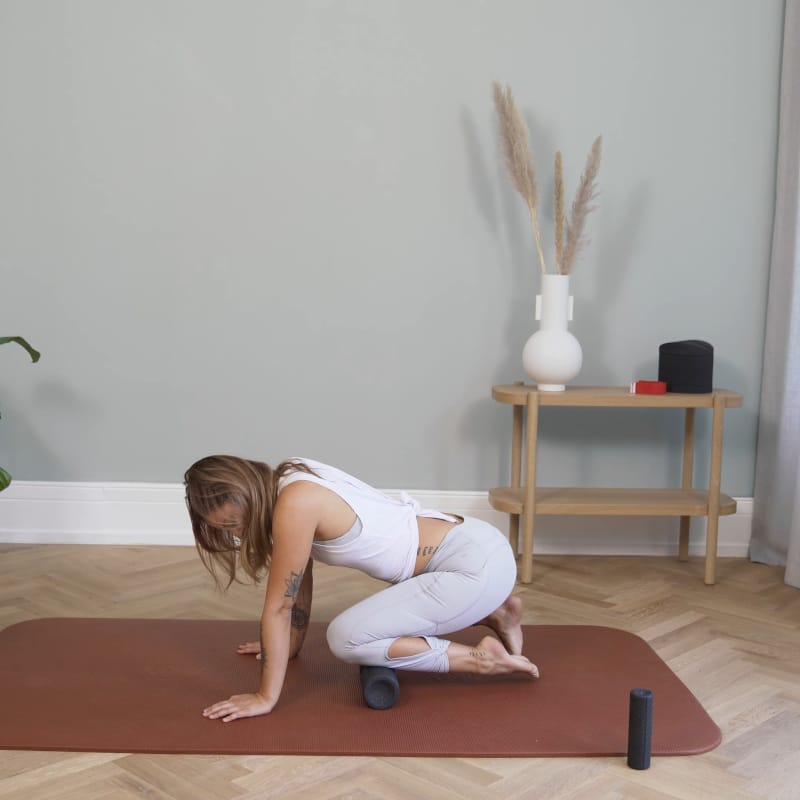Shin splint exercises
Body Part:
Shins
Equipment:
Mini & Midi Foam Roller
Level:
Beginner
Body Part:
Shins
Equipment:
Mini & Midi Foam Roller
Level:
Beginner
Shin splints. It’s the searing burn along the lower leg that causes runners remorse, athletes angst, and is even the bane of ballet dancers. Shin splints – also known as medial tibial stress syndrome – are a very common overuse injury among athletes who run and jump.1) We’ve developed a 10-minute home exercise routine that will help you battle the burn so you can dash distances and keep enjoying your runner’s high. All you need is our Mini Foam Roller, Midi Foam Roller and a wall or a chair. Scroll down to follow along with our video, or keep reading to learn about the what, why, and how of shin splints.
The term shin splints refers to pain along the front of the leg between the knee and the bottom of the shin. Shin splints occur when your feet land too hard on the ground, and your muscles and bones can’t support the force of the impact. There are two types of shin splints:
Shin splints are caused by overworking your shin, usually during running, playing sports, or an activity that requires jumping. The repetitive stress of these activities pulls the calf muscles and connective tissue, causing inflammation.
Flat feet may also cause shin splints. The arches in the foot act as shock absorbers. If you have low or no foot arches, the shin is forced to absorb more of the impact when your foot makes contact with the ground.
If you suddenly increase the intensity or frequency of your exercise or resume exercise after a long break, you may develop shin splints.
Runners are at risk for shin splints if they aren’t mindful of their form, don’t stretch before and after running, wear shoes that aren’t supportive, or run on surfaces that are hard or uneven.
The most common sign that you have shin splints is pain along the lower leg. The area may feel sore, be tender or swollen. The pain along your shin may stop after exercise, or it may continue.
Buy our foam rollers and discover more pain-relieving tools in our online shop.
Take me to the shop.
Sign up for our free newsletter and discover how to manage your pain yourself. Every two weeks, we’ll deliver follow-along videos and articles to your inbox.

For this exercise, you’ll need our Mini Foam Roller.
Looking for a more intense variation of this foam roll massage? Get your Midi Foam Roller and try the variation below.


Perform our shin splint exercises for an initial sprint of 6 days a week for 3 weeks. After the initial sprint, adjust the frequency according to how your shins feel.

Sign up for our free newsletter and discover how to manage your pain yourself. Every two weeks, we’ll deliver follow-along videos and articles to your inbox.
Then we would be happy if you shared it with your friends: